As development in Northern Liberties continues to fill in remaining vacant lots and former industrial spaces, the success of its redevelopment continues to bleed into the surrounding neighborhoods. As we’ve detailed, the growth in the neighborhood has extended beyond 6th Street into East Poplar, and has influenced the Franklin-Callowhill industrial district to the south. Despite this, an unquantifiable relic of the mid-20th Century government-led redevelopment lingers on to the bewilderment to all who encounter it: the strange “mall” that fills the north side of the 500 block of Spring Garden Street.

The Wholesale Distribution Center, as it was originally known, was made possible by a mid-20th century effort from the Redevelopment Authority known as the East Poplar Urban Renewal Plan, which struck the 500 and 600 blocks of North Randolph Street and the 500 block of Green Street to create an industrial super-block bounded by 5th, 6th, Spring Garden, and Fairmount. This plan also created the housing blocs on the 500 and 600 blocks of Brown, Parrish, and Poplar Streets around the same time.
In 1963, a company called District Wholesale Distribution Association Inc., a group of wholesale merchants that had been displaced by another urban renewal plan, spared no expense in commissioning Philadelphia architecture firm Milton Schwartz and Associates for the design of a structure that could allow them to sell and distribute dry goods to both businesses and the public in a pleasant space.
This prolific architecture firm designed the Dorchester on Rittenhouse Square, Park Towne Place on the Parkway, and additions to Frankford High School, along with many other commissions around the region. Unfortunately, this firm is often ignored by history because a different firm of the same name, out of Chicago, was much more famous. That firm designed several Modernist Chicago skyscrapers and the Dunes Hotel in Las Vegas. Not only did the Chicago Milton Schwartz get credit for the Philadelphia Schwartz’s work in his obituary, but even the nomination of Park Towne Place to the National Register of Historic Places made the same error. What a shame!
In October 1963, the Planning Commission approved the construction of the new center, and it was complete within a year. The design consists of two concave buildings facing each other across a small courtyard called “Spring Garden Mall,” surrounded by asphalt for parking and deliveries. The inward-facing design was probably meant to facilitate deliveries and create an outdoor-mall-like environment in the center section. Public art in the form of bronze figures decorated the plaza.
The Spring Garden Street Mall, as it came to be known once built, was split into eleven business condo units, and ownership transferred to the eleven soft goods wholesalers that came together to fund its construction. They came to call themselves the Fifth Street Wholesale Distribution Association. By the 1970s, many of those merchants already sold or leased their spaces in the “mall” to other types of concerns that were not necessarily in keeping with the whole “soft goods” theme. Swiss digital wristwatch maker Microsonic set up their American outpost at the complex by the mid 70s. Everything you can think of from a casket maker to a culinary school managed to buy or lease spaces in the complex, which by the 80s was known as the Liberty Shopping Plaza. The Spring Garden Distributing Company, a distributor of vending machines and associated supplies, has been operating out of #523 Spring Garden Mall since 1967.
By the start of the 21st Century, the Liberty Shopping Plaza was showing its age. The plaza’s public art had been long removed and a series of cage-like metal fences installed. Many of the spaces were vacant or only gave an indication of their presence via a small sign facing the south parking lot. By 2012, however, some improvements were made. On the western side of the complex, the owners of 533-35 Spring Garden Mall divided their unit into more retail-friendly-sized floor plates and installed standard retail storefront signs along their exterior. This made the old Wholesale Distribution Center almost disguise itself as a standard suburban strip mall, at least on one corner.
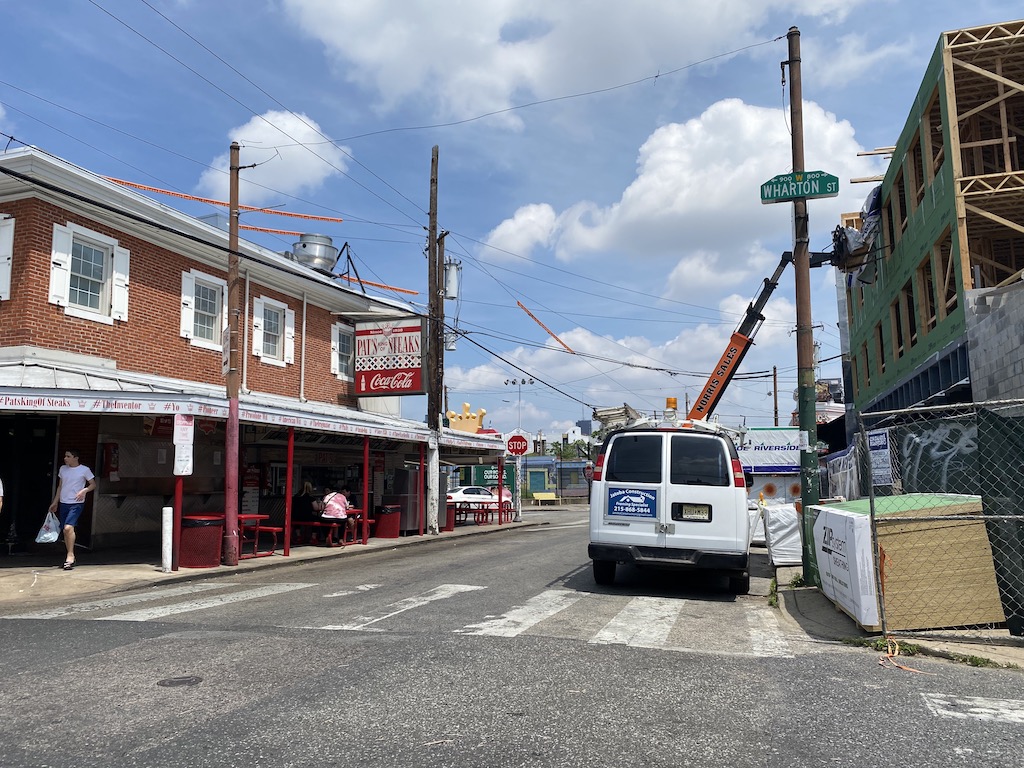
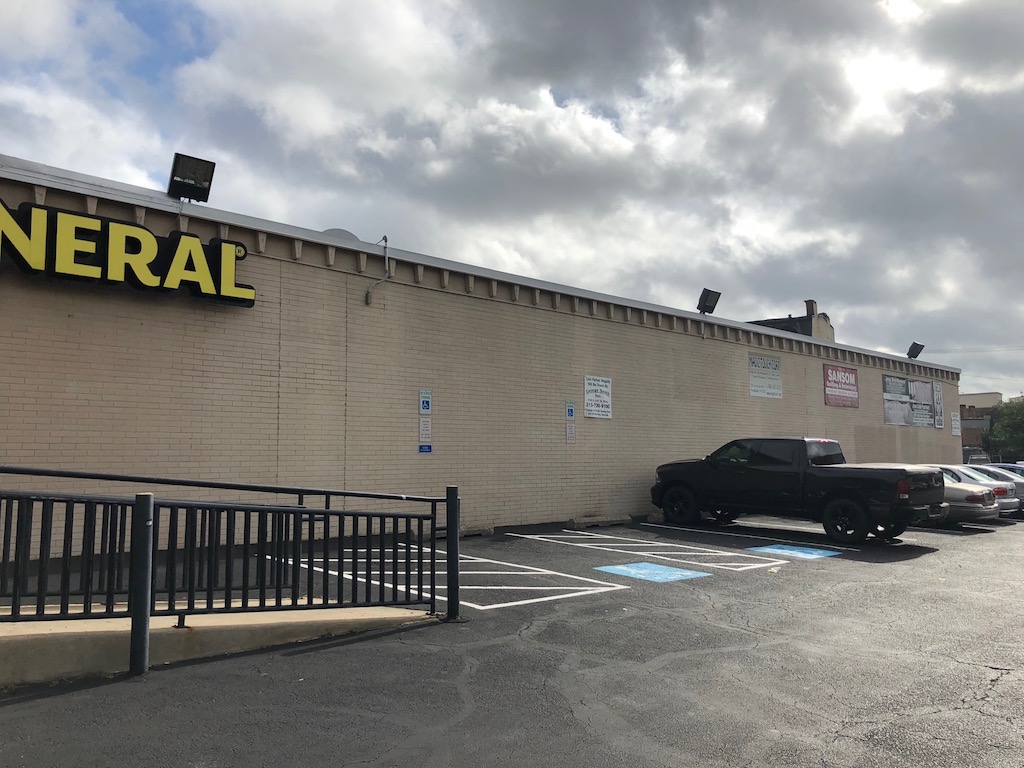

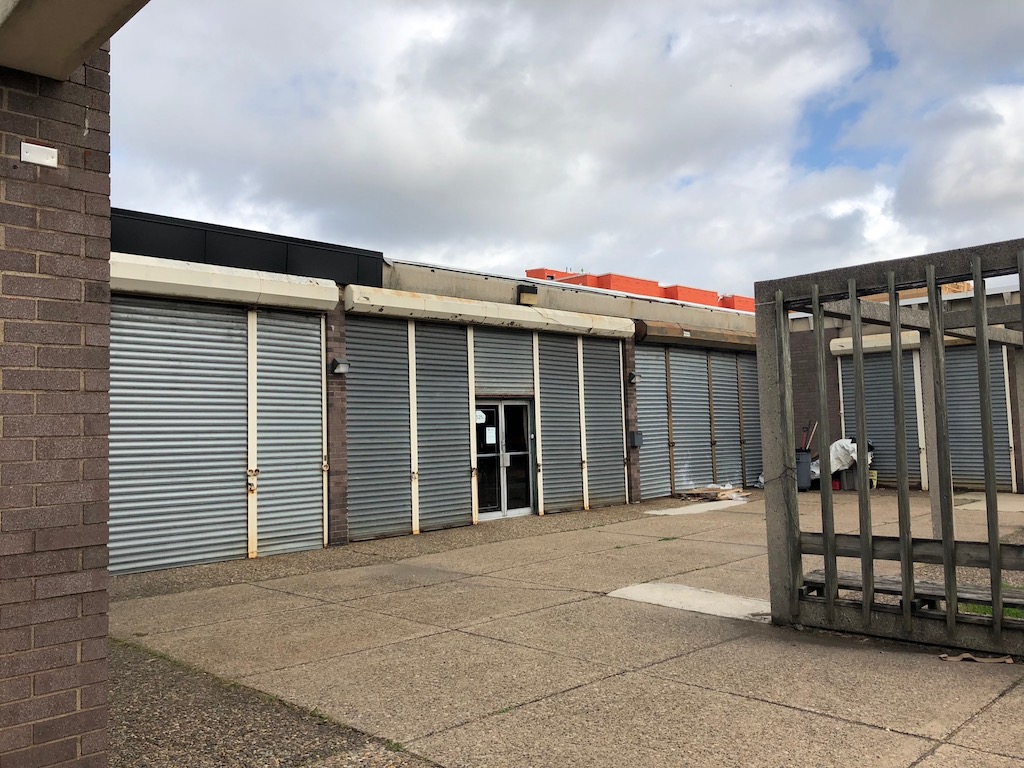
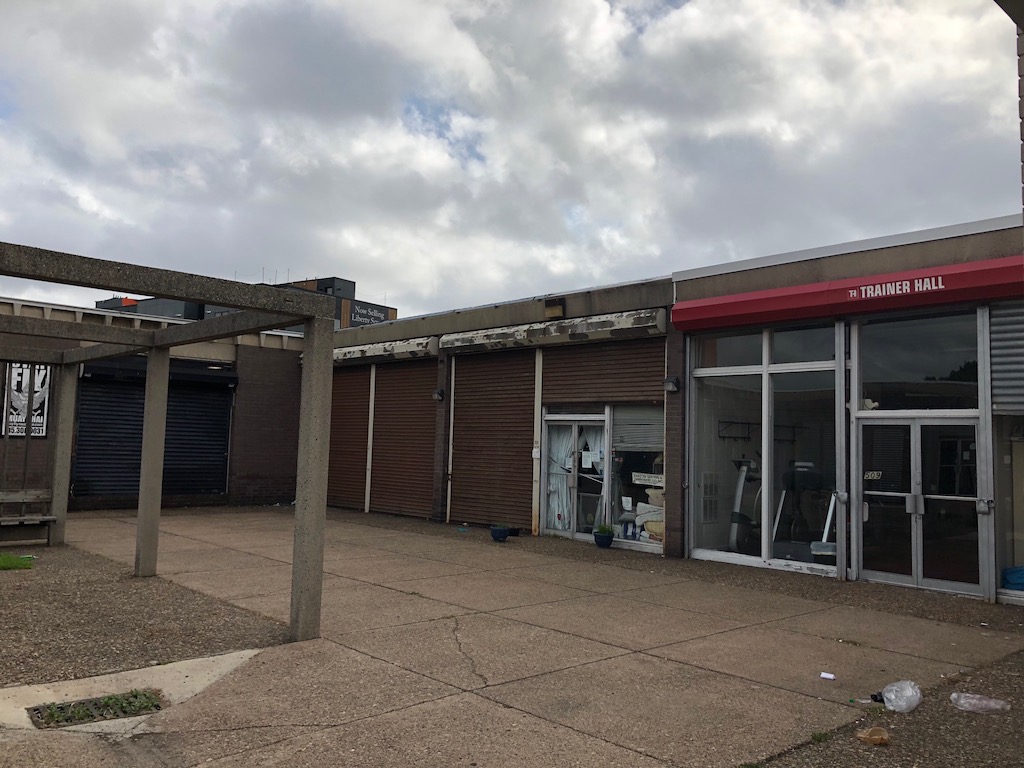
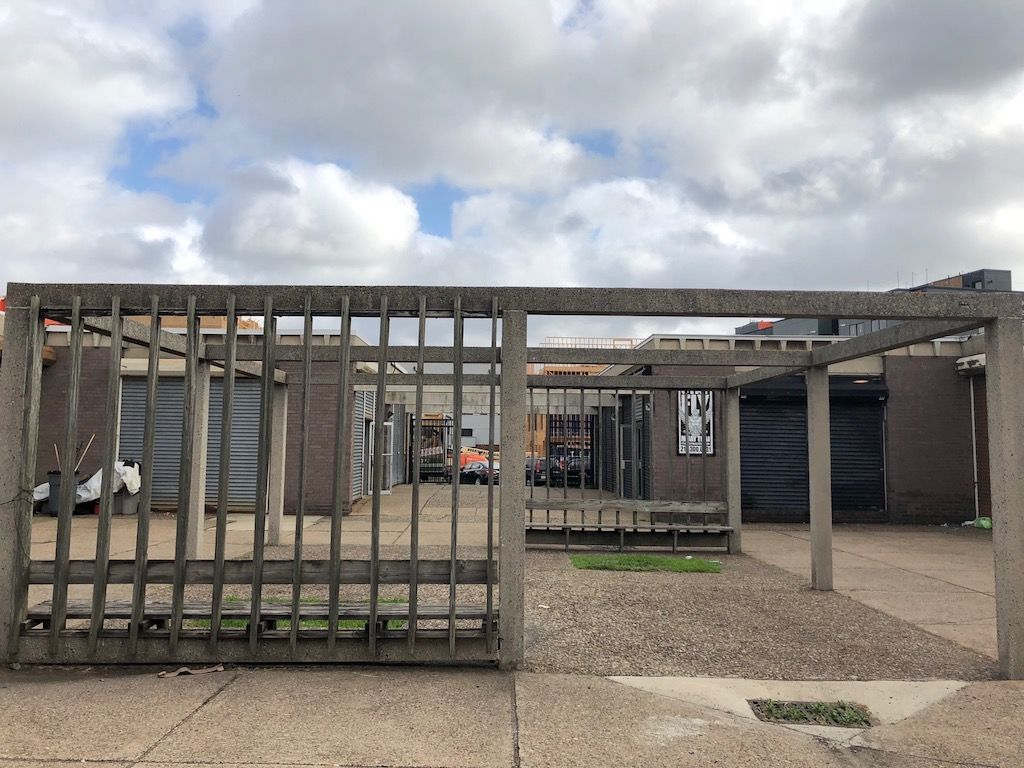
Nowadays, this site’s use as an almost-suburban-style almost-strip center is as massive underutilization of the property, especially in this neighborhood. The two parcels to the north, also made industrial by East Poplar Urban Renewal Area Plan, have both given themselves over to townhome developments. The challenge with the Wholesale Distribution Center is that it’s made up of those aforementioned condo units. One would, in theory, have to buy up all the units in order to tear down the existing building and construct something more appealing– and there is evidence that some developers may have attempted it. As nobody has been successful to date, we’re pretty much resigned to the reality that it’s not going anywhere any time soon.
